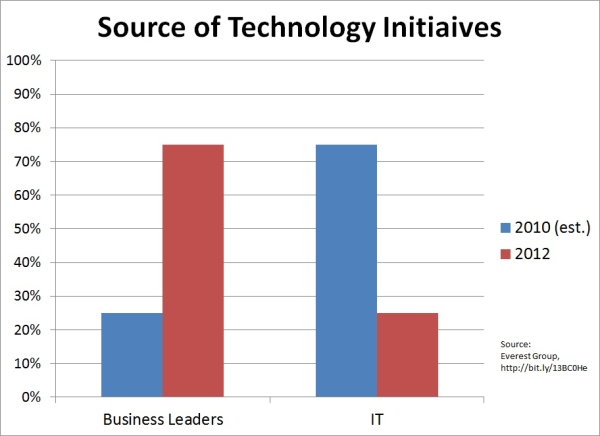
The other 75% of IT projects were introduced and advocated by business leaders like CFOs and CMOs. This raises questions about the purpose of IT: should CIOs and IT directors guide their firms to new technologies and opportunities? Or is their role strictly to carry out the plans of their colleagues?
And what does this trend mean for law firms? This study focused on the corporate sector, but can those of us in legal technology learn from it? Is IT strategy no longer the domain of IT?
The Need to Compete
Law firms are certainly facing competitive pressures like those in the corporate world. The weak economy continues to affect business, as even firms like Patton Boggs, which avoided layoffs during the recession, are now cutting jobs in response to reduced demand. Researchers at Georgetown University recently observed that with the total demand for legal services barely growing, firms are focusing on stealing clients and market share from their peers.
One perennially talked-about tool for attracting is fixed-fee billing. A recent survey by Pepper Hamilton found that 70% of major companies expect to see more alternative fee arrangements (AFAs) in use. This will be a boon to firms that offer AFAs, if it translates into increased demand. Limiting fees is only good for business, though, if a firm can also limit its expenses. Firms seeking to use AFAs to increase profits will thus find it imperative to manage their internal costs, including their IT spending.
Outlook: Cloudy
In the corporate world, these same pressures have pushed technology strategy into the hands of CFOs and CMOs. If the legal world reacts the same way, what will that mean for technology budgets?
More Cloud, according to one commentator. A Forrester representative claims that corporate CFOs interested in reducing upfront costs will advocate software-as-a-service options and innovative vendors. Research by the Everest Group also suggests that non-IT leaders weighing in on technology plans favor more cloud services.
This could significantly impact the structure of IT departments. Law firms making a heavy move to the cloud may find that they require fewer people managing servers and applications. On the other hand, the Cloud is still a bit of an unknown for many firms, and if Cloud adoption runs into problems, IT personnel could find themselves coming to the rescue. In either case, it has the potential to shift the responsibilities and expectations of IT departments.
Quixotic vs. Quality
Even if non-IT leaders exert more control over IT strategy, IT directors do not need to fear this trend. Of course, when times are tight, CIOs and IT directors who pursue quixotic projects may face more resistance than normal. Projects with large potential payoffs may be turned down, simply because firm leaders prefer to avoid their risks.
But CIOs who meet firm stakeholders halfway can be more valuable than ever. Surviving in lean times requires focusing on core competencies. For IT leaders, this means evaluating which IT services are providing the most value to the firm, and championing them. That way, when firm leadership talks about growing the business and staying competitive, they will see that IT is on their side. IT directors and CIOs who can respond to their firms’ business goals will be in the best position to guide their firms’ technology strategies.